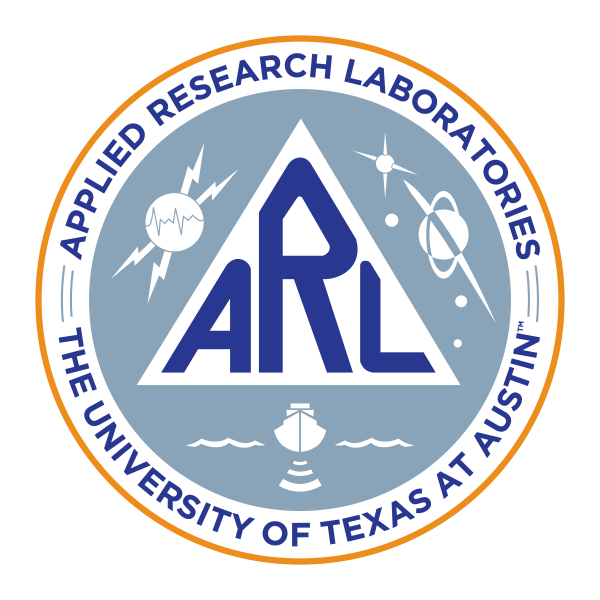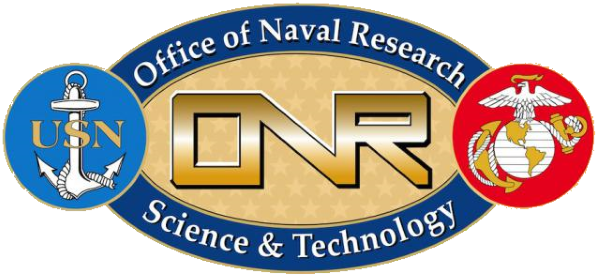Chief Scientists
David Knobles
Research Scientist
Knobles Scientific and Analysis, LLC
Preston Wilson
Professor
ARL:UT, UT Mech Eng Dept
SBCEX
Seabed Characterization Experiment
Experiment Overview
The Seabed Characterization Experiment will take place in 2017 at the site of the New England "Mud Patch" which is located 110 km south of Cape Cod, Massachusetts. This region is characterized by smooth bathymetry and a high content of silt and clay sized particles.
The main objectives of the Seabed Characterization Experiment are (1) to understand the physical mechanisms that control propagation in fine-grained sediments, (2) to quantify uncertainties in estimated seabed parameters, and (3) to assess the resulting geoacoustic models and inversion methods. These goals will be accomplished by obtaining direct measurements and/or inferring the values of the following parameters: compressional wave speed and attenuation, shear wave speed and attenuation, seabed roughness and volume scattering, and seabed layering and gradients. An emphasis will be placed on obtaining parameter values over a wide frequency band and on understanding the deterministic versus stochastic part of environment. The effects of parameter uncertainty will be quantified and a mapping parameter uncertainty to transmission loss uncertainty will be pursued. An understanding of how the seabed characterization affects sonar performance predictions, including effects on transmission loss, reverberation, clutter, ambient noise, and array coherence, will be sought.
Pilot Experiment
The Seabed Characterization Pilot Experiment was conducted in the late summer of 2015 on the R/V Sharp. The experiment consisted of two legs, with the first leg of the experiment concentrated on chirp and multibeam surveys and the second leg of the experiment focused on sediment coring. The measurements made during the pilot experiment are described below.
Chirp Survey |
CHIRP data were collected using an Edgetech 512i towfish operating either with a 0.7-12kHz, 20ms pulse (lines MP1-7, 9) or a 0.5-7.2kHz, 30ms pulse (all remaining lines). The "CHIRP" acronym stands for "compressed high-intensity radar pulse", even though the technology has been adapted for sonar. Both full-waveform and envelope records were collected. Data have been processed for fish depth, heave filtered and corrected for layback from the ship's navigation. The data were interpreted using Landmark's Decision Space software. Interpreted horizons include the seafloor, five internal reflectors within the mud section (mh0-3, mhtop), the mud/sand transition (mudbase), the Holocene/Pleistocene transition (sandbase), and an internal reflector within the Pleistocene (deepbase). These horizons were interpolated/extrapolated to a grid (maximum 200m from data points) using a spline-in-tension algorithm.
Multibeam Bathymetry Survey |
A Teledyne-RESON SeaBat 7125-SV2 multibeam echo sounder installed aboard R/V Sharp and operated at 200 kHz was used for the swath bathymetry. This sonar is deployed on a pod through the center well of the vessel, resulting in a nominal transducer draft of 5.5 m. A towed EdgeTech SB-0512i sonar (CHIRP frequency range 500 Hz – 12 kHz) was used for concurrent subbottom profiling. Ancillary measurements included 19 profiles of conductivity-temperature-depth (CTD taken with a Sea-Bird Electronics 9plus CTD package.
Coring |
The gravity core is a weighted core which is driven into the bed of a lake or ocean by the force of gravity. The tube is long enough, usually at least a few meters, to collect many layers of sediment. The sediment collected can be analyzed for indications of historical climate patterns stretching back as far as millions of years. Samples can also be tested for grain size and type, evidence of marine life, and a variety of other physical properties.
Combustive Sound Source |
The Combustive Sound Source (CSS) is a versatile, impulsive, underwater sound source with adjustable bandwidth and output amplitude. The source consists of a submersible combustion chamber which is open to the water and filled with a combustible fuel-oxidizer mixture that is ignited with a spark. The combustive gas mixture can be metered into the chamber through bottles, or a stoichiometric mixture of hydrogen and oxygen gas can be delivered to the chamber as needed by submersible electrolytic cells. Upon ignition, the combustive mixture is converted into high temperature combustion byproducts (water-vapor when a Hydrogen-Oxygen gas mixture is used) which expand and ultimately collapse back to a smaller volume than before ignition. Acoustic pulses are radiated by the bubble activity. Unlike typical impulsive acoustic sources, CSS can maintain a wide bandwidth at low amplitude making it a more environmentally-friendly, impulsive source for ocean acoustics experiments and surveys. The CSS can be used as a source for calibration, TL measurements, and bottom characterizations, and when it is deployed on the bottom it can create seismic interface waves.
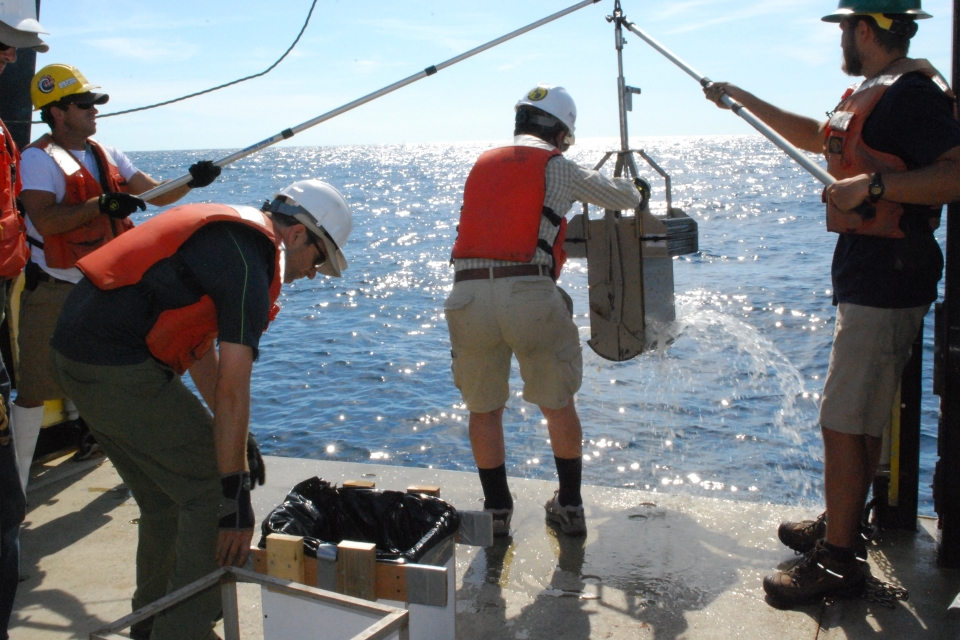
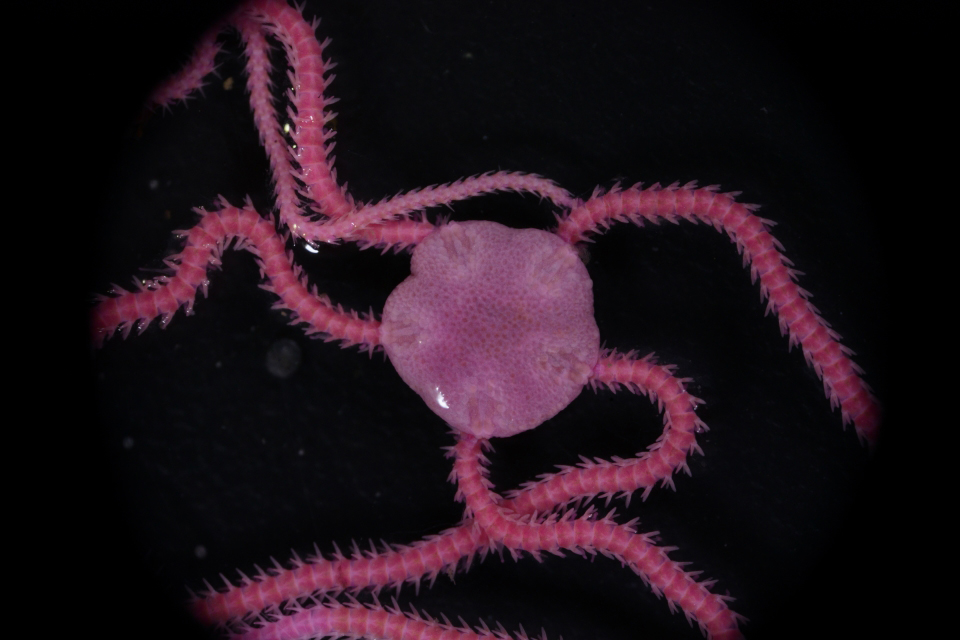
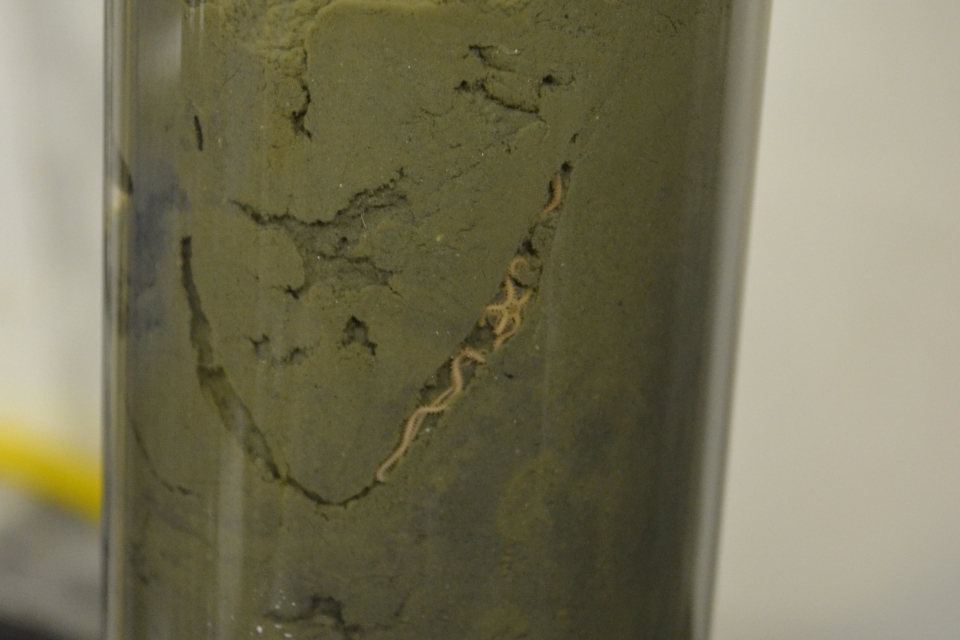
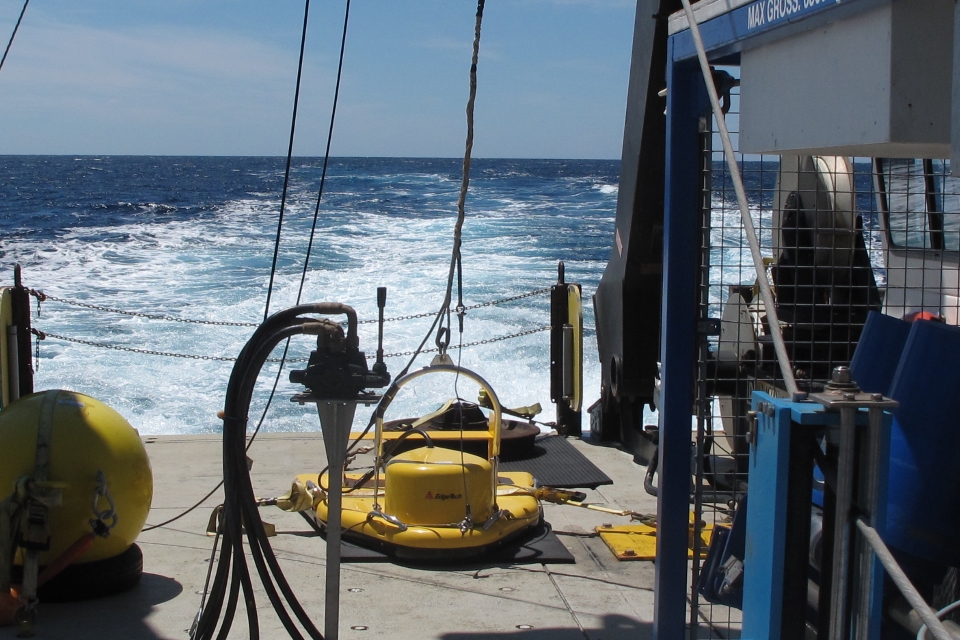
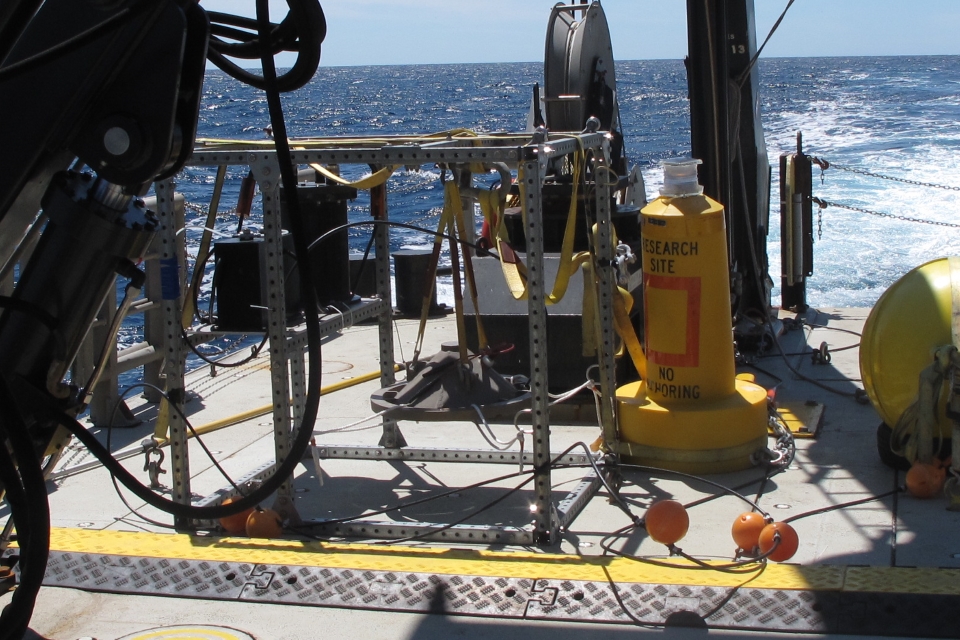
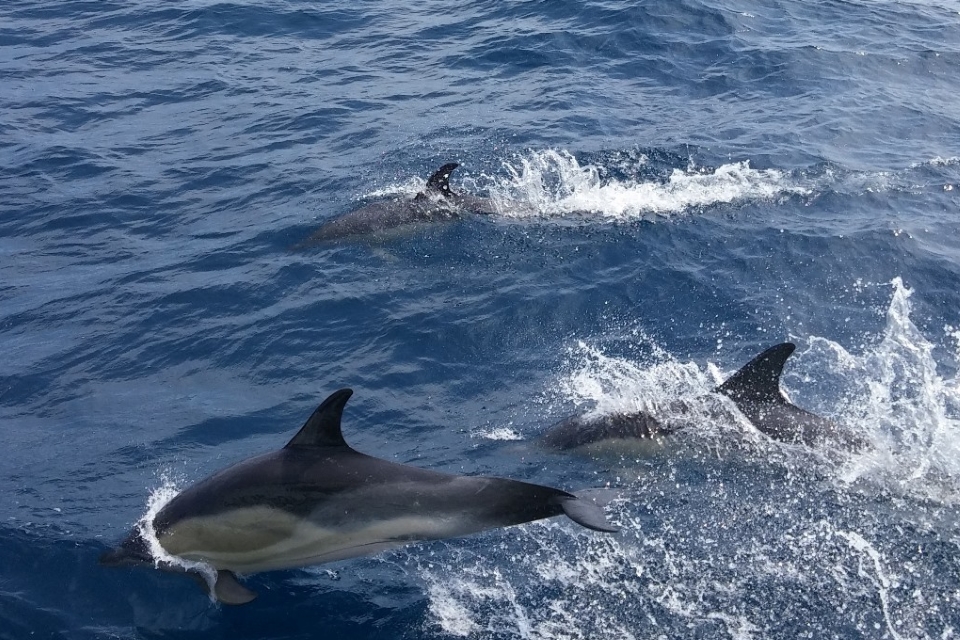

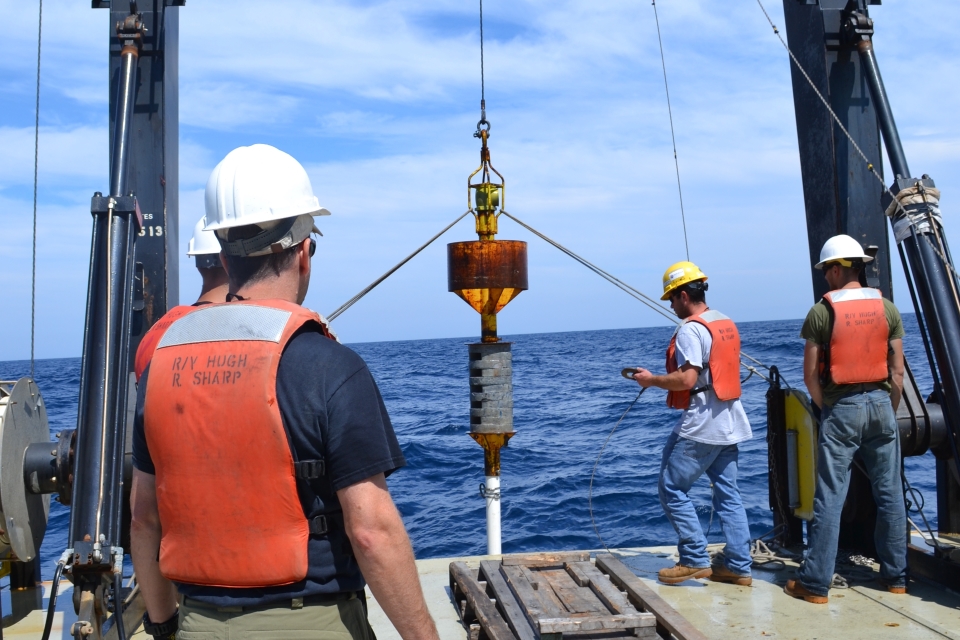

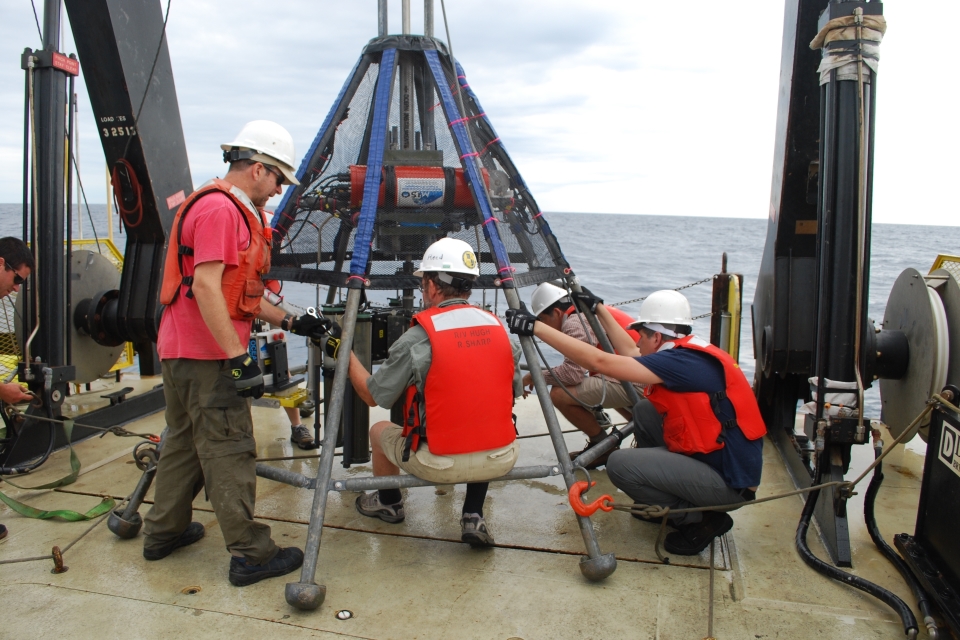
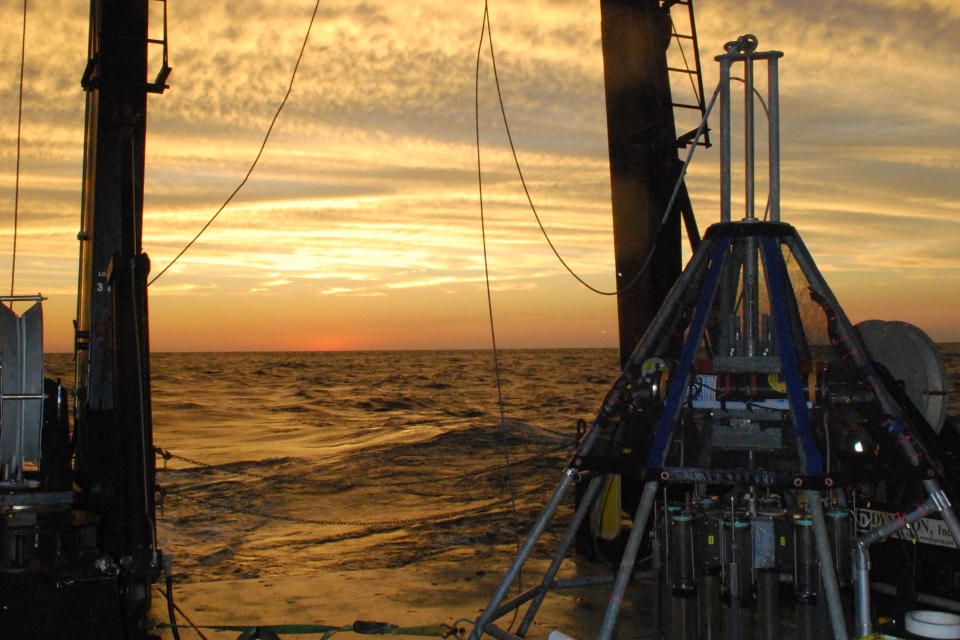
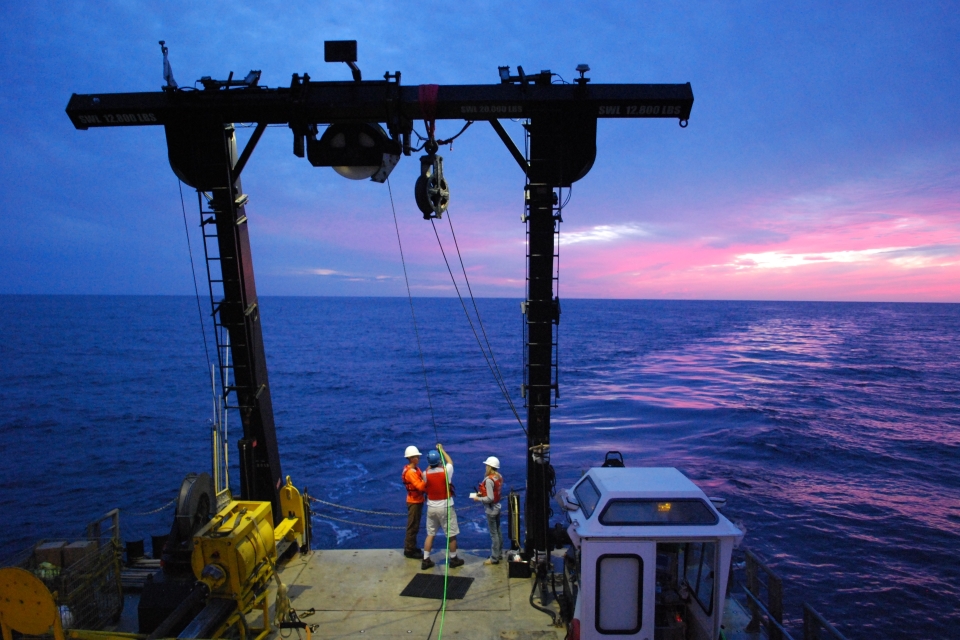


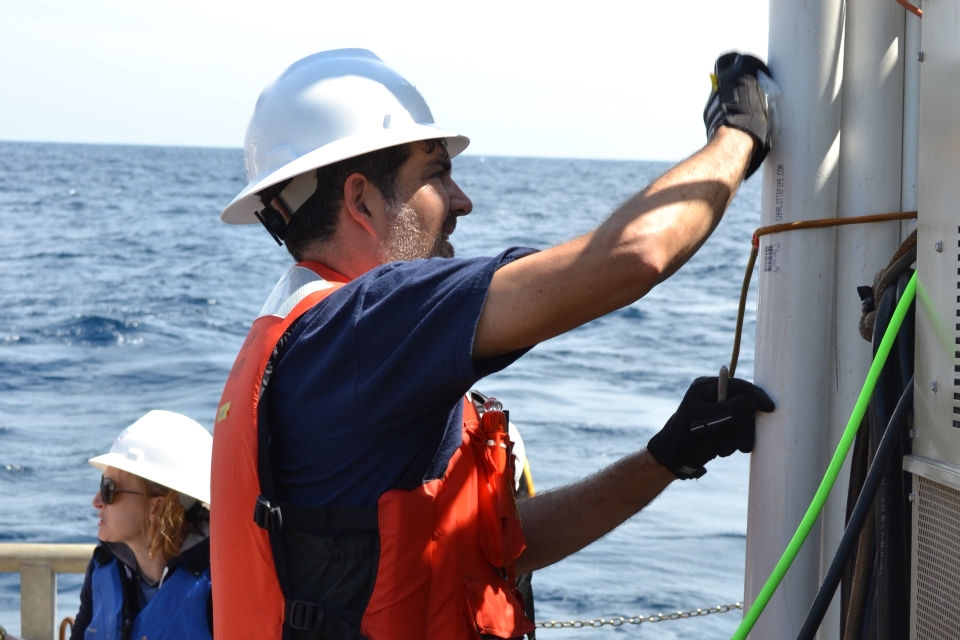

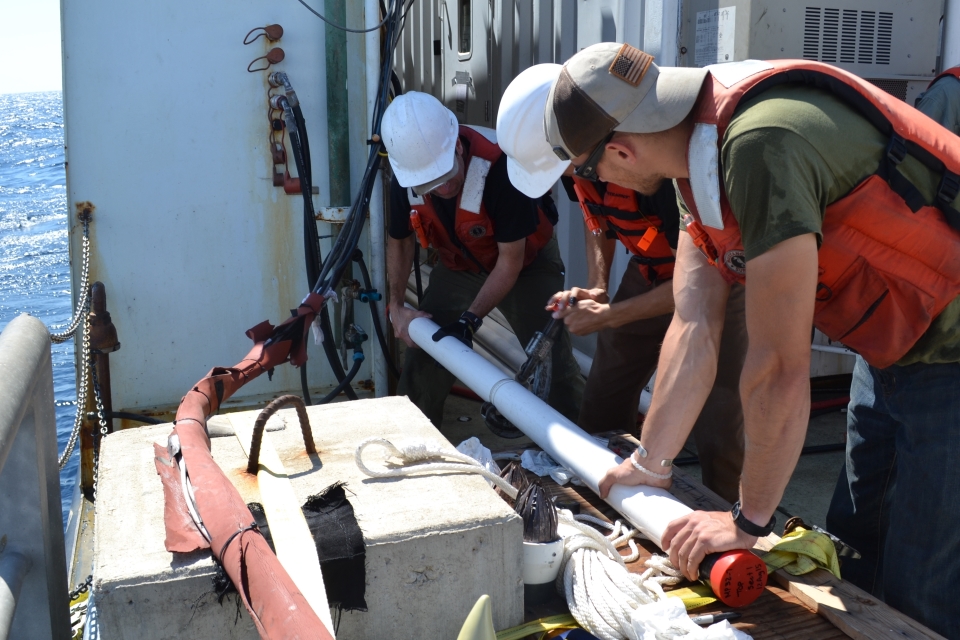

|
||
